György Klösz's photograph taken around 1877 is special because it beautifully shows the radical transformation of the inner city of Pest, during which today's 5th District became one of the modern districts of the united capital from an old trading town with curvy streets.
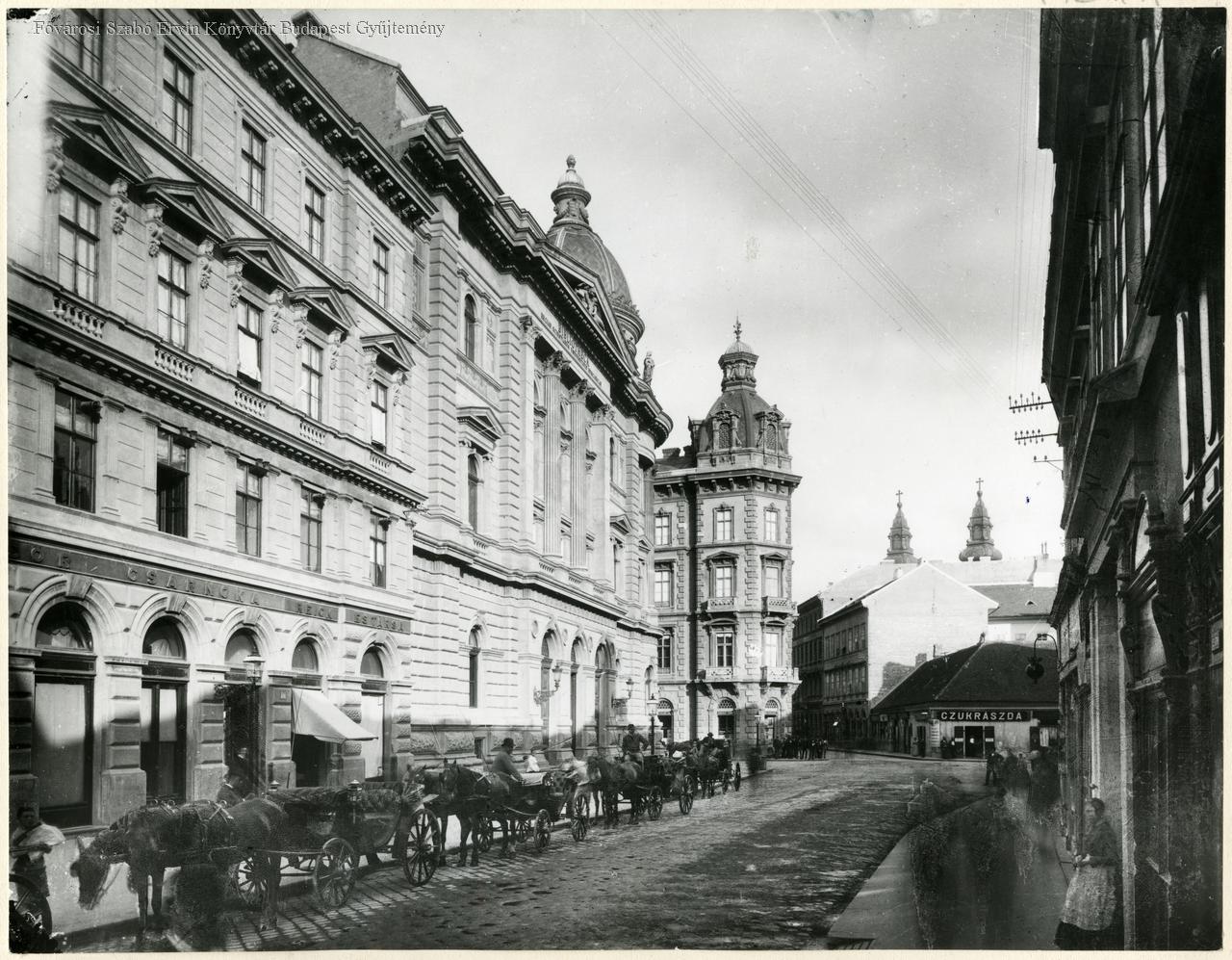
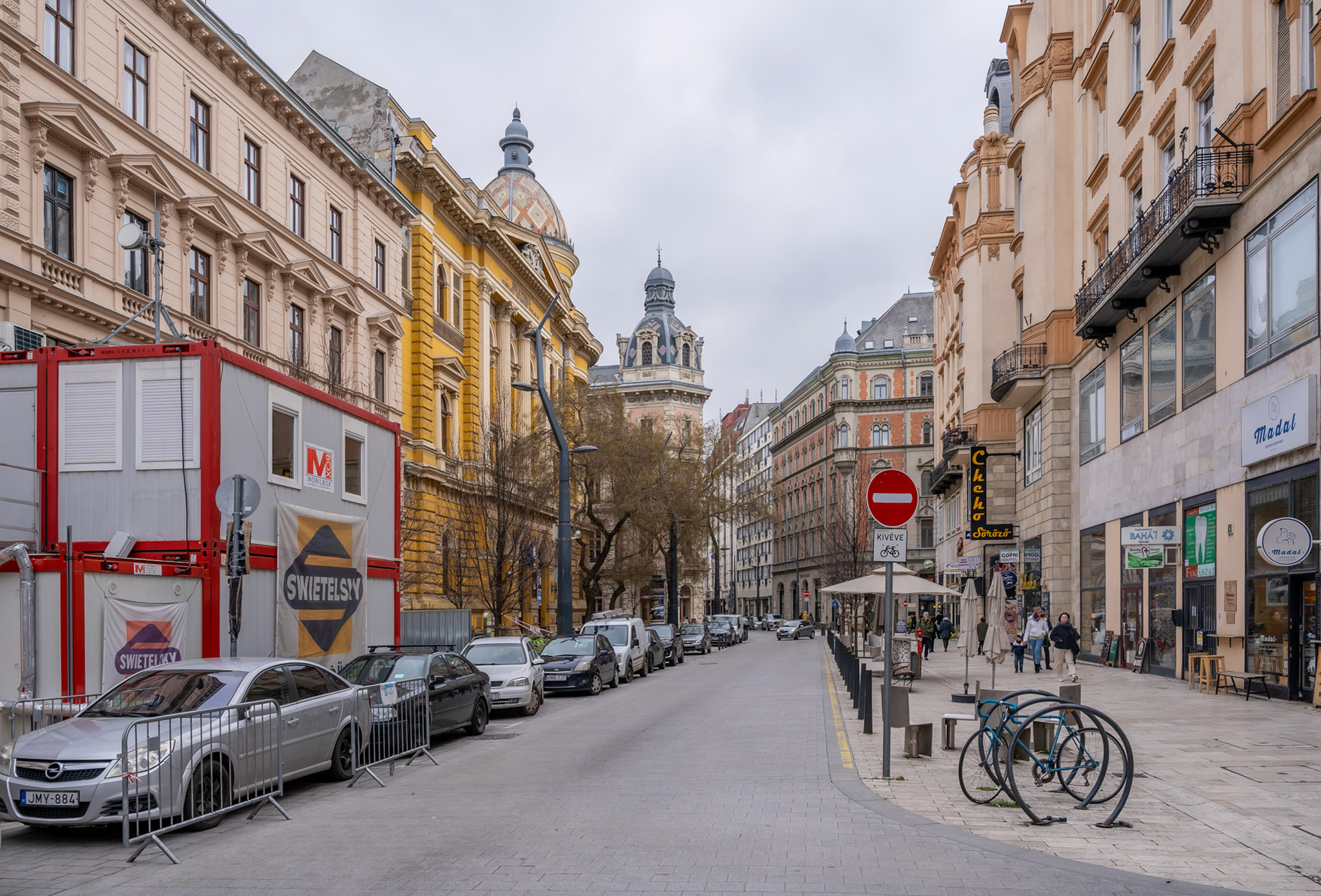
Above: Ferenciek Square in 1877, taken by György Klösz, below: the square nowadays (Photo: FSZEK Budapest Collection, Balázs Both/pestbuda.hu)
In the photo, some of the buildings of Ferenciek Square that are still standing today can be recognised. The domed building on the opposite left, on the corner of today's Realátanoda and Károlyi Streets, is the headquarters of the First Savings Bank of Pest built in 1866-1868 and designed by Miklós Ybl. The dome that emerges to the left of the house already belongs to the University Library designed by Antal Szkalnitzky, which was handed over a year before the photo was taken, carriages are waiting in front of it and in front of the neighbouring Ferences Bazaar. However, next to the lavish palaces of the "new Pest", there was still an old small house, the building with the inscription "Czukrászda" [Confectionery], which also housed a barber shop and a carpentry workshop, and in its place, the building that later housed the Central Café was completed only in 1887. On the right side of the picture still stands the one-story Baroque Grassalkovich Palace, the headquarters of the Athenaeum printing house, which was demolished in 1897 and replaced by the still-existing Royal Bazaar building.
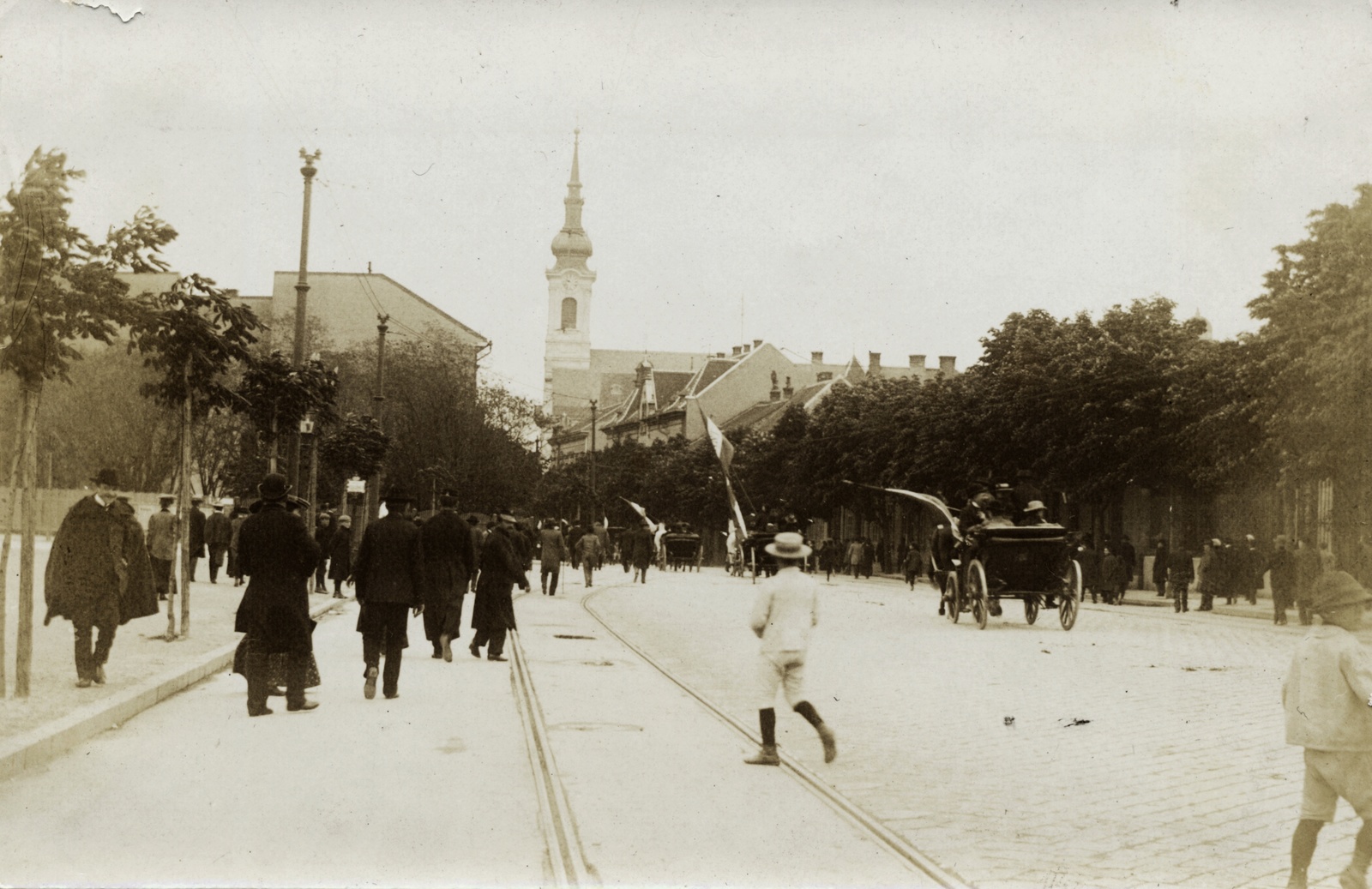
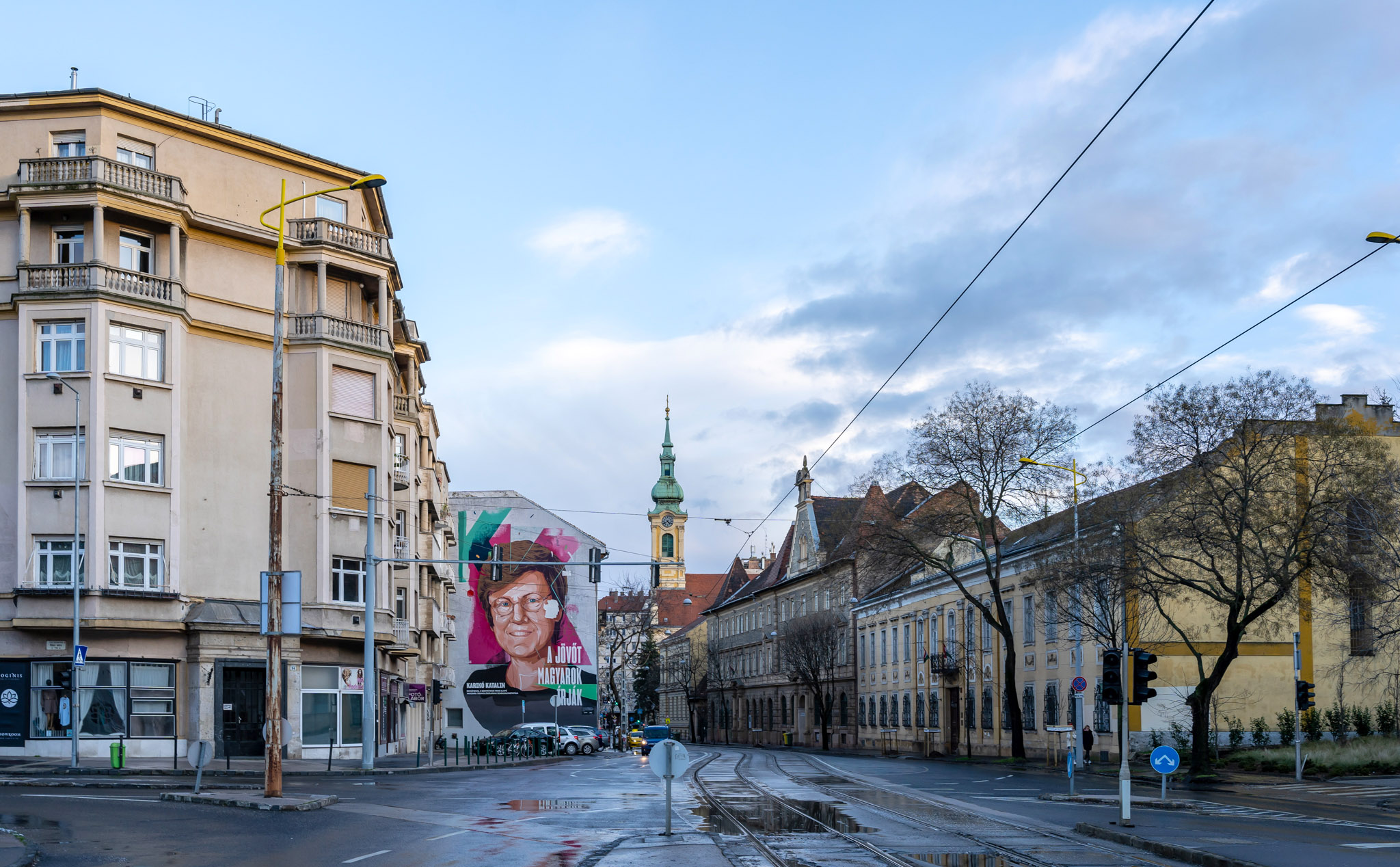
Above: Krisztina Boulevard at Vérmező in 1906, below: the boulevard today (Photo: Fortepan/No.: 115841; Balázs Both/pestbuda.hu)
The location is familiar, yet how different. At the place where Ignác Martinovics and his companions perished, at Vérmező, next to the freshly planted trees on Krisztina Boulevard, the crowd marches towards Krisztina Square in 1906, during the repatriation of the remains of Ferenc Rákóczi II. In the part of Krisztina Boulevard opposite Vérmező in 1906, there were still large empty plots of land, and there were those who envisioned the Museum of Ethnography here: Adolf Lendl, who later became the first director of the Zoo, proposed this site instead of the Industrial Hall of the City Park in the 25 December 1906 issue of the Budapesti Hírlap. Nothing came of the idea, as a botanical garden was never created on the Vérmező, even though – as the 28 March 1906 issue of the Pesti Napló writes – the committee of the Ministry of Public Education and the capital's council recommended this as the location. The guy crossing the tracks looks like he belongs to The Paul Street Boys (which was written by Ferenc Molnár that year), looking towards the church where Count István Széchenyi married Crescence Seilern on 4 February 1836. The church in Krisztinaváros apparently looks like it does today, but only at first glance. At that time, the building was still a good 5 metres shorter than it is today, it was only expanded in 1943-1944 by cutting off its sanctuary from the main nave, pulling it back on rails, and then building a transept in the resulting space.
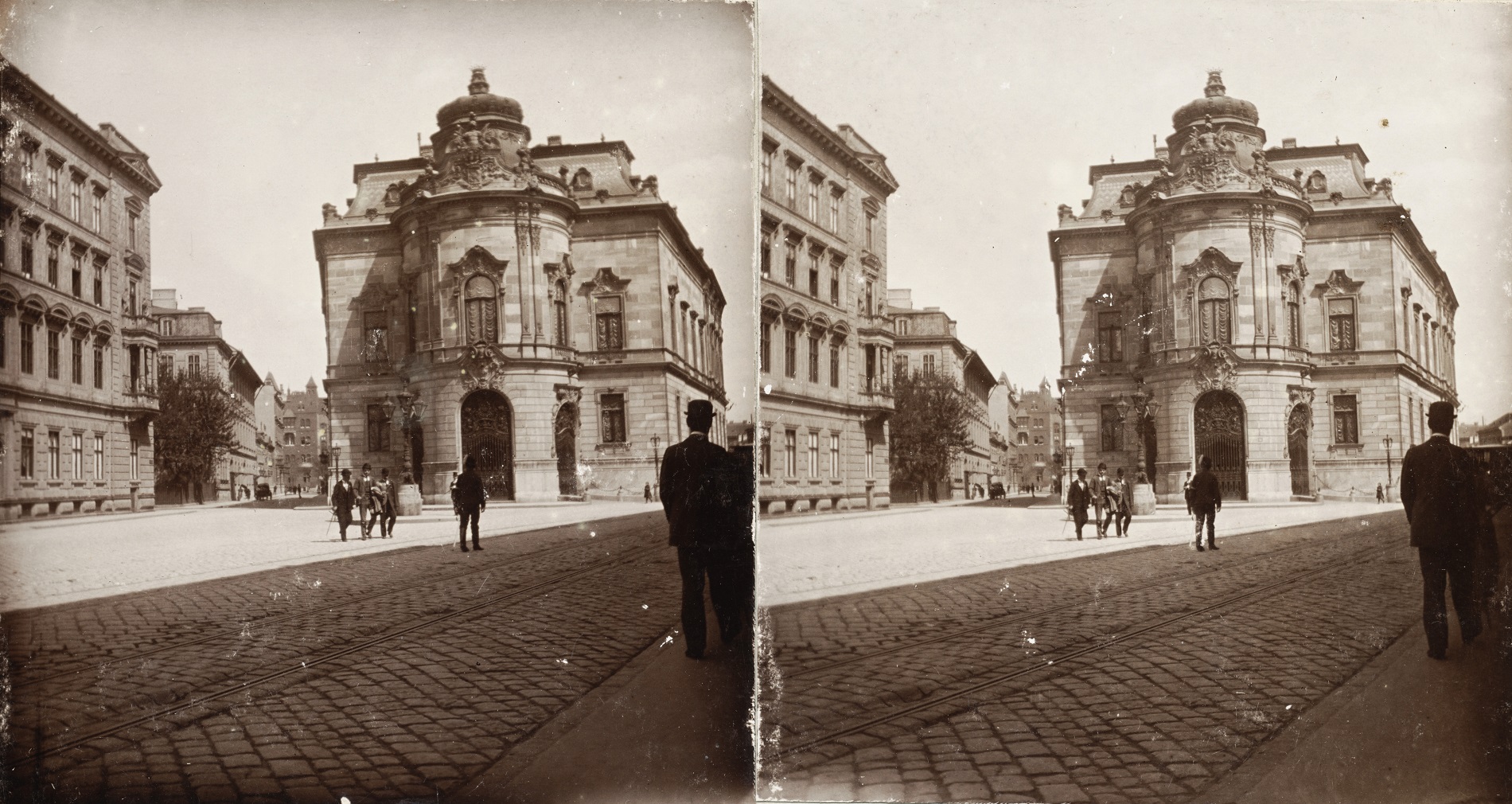
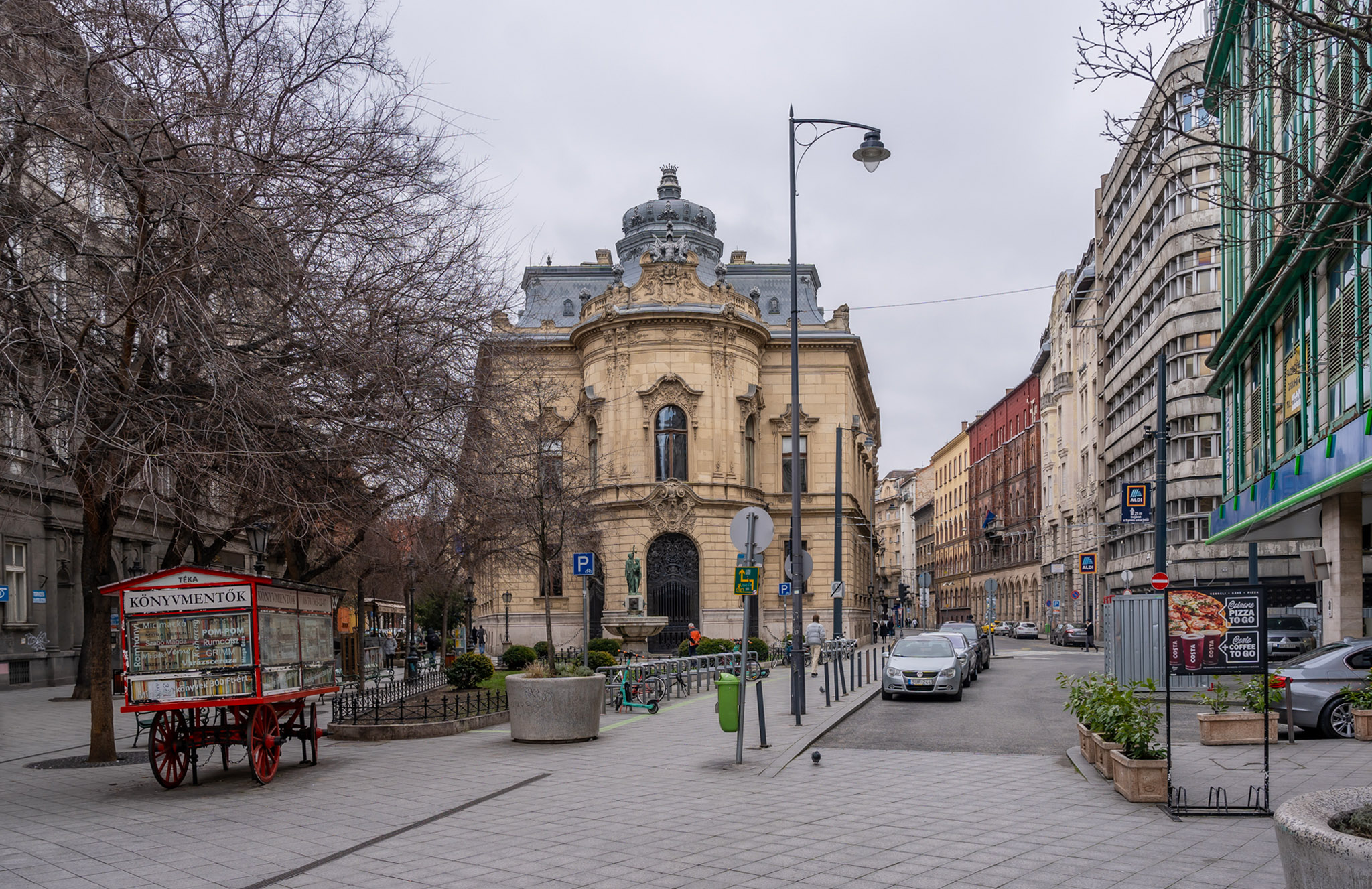
Above: The beginning of Baross Street with the Wenckheim Palace in 1894, below: The part now known as Szabó Ervin Square (Photo: Fortepan/No.: 94404, Balázs Both/pestbuda.hu)
In Budapest, sometimes the permanence is surprising when coming across a house, street, or square whose appearance has not changed significantly in the past century and a half. This is also the case with the above stereoscopic image taken in 1894. The houses may be familiar, as the Neo-Baroque Wenckheim Palace, which houses today's Metropolitan Ervin Szabó Library, completed in 1897, is still standing, as are the residential buildings visible in the picture and also the Pálffy Palace of 1896, designed by Miklós Ybl, hidden behind the tree. However, the cobblestones are already a thing of the past, as is the elegant everyday wear with a hat and walking stick; the luxurious world of the aristocrats will not return either. Fortunately, the legacy of peacetime, the palaces can still be enjoyed.
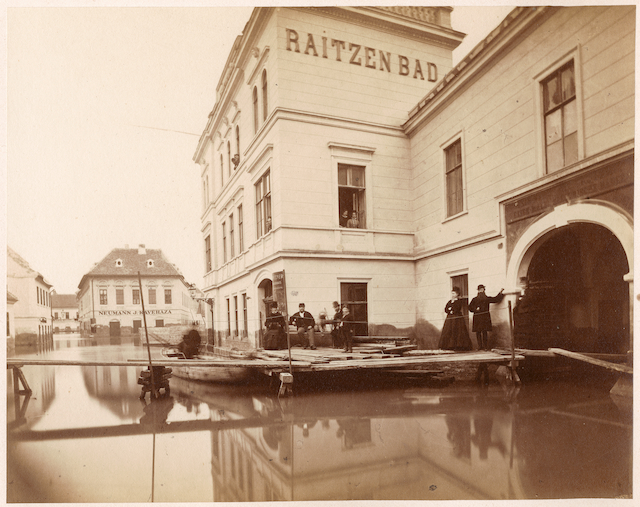
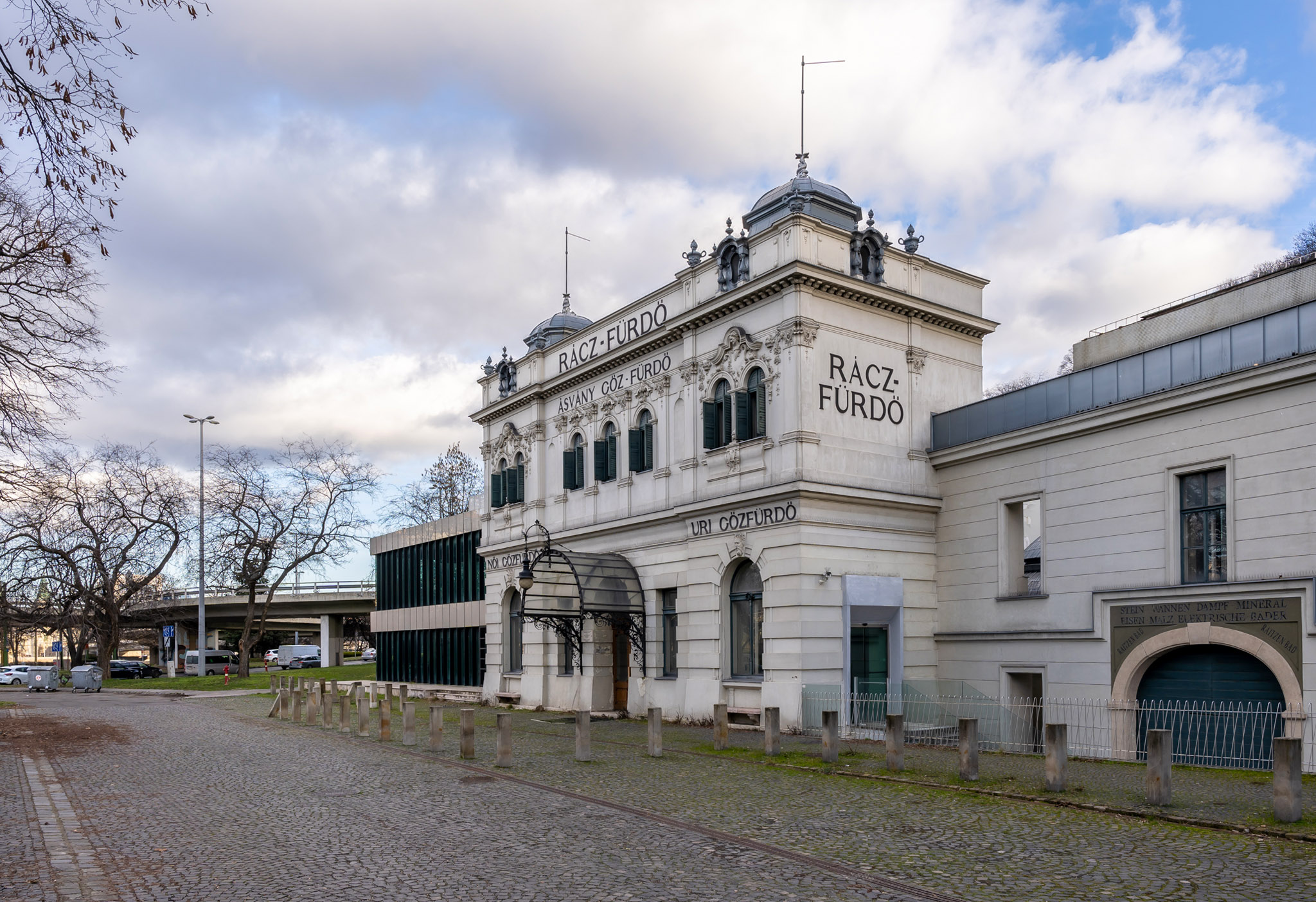
Above: The Rác bath in Tabán during the flood of 1876, below: The bath today (Photo: HNM, Balázs Both/pestbuda.hu)
In addition to the great flood of 1838, the spring flood of 1876 also caused considerable destruction in Budapest. By then, however, the capital was more prepared for the rise in the Danube's water level, around twenty thousand people were evacuated, but many houses in the lower-lying areas - especially in Buda - suffered damage. The photo above, taken in March 1876, shows one of Tabán's streets covered in water, to the right is the now renovated Rác bath, known for its unworthy fate, and opposite Neumann's coffee house. The small bath, which survived from the Turkish era, was expanded and rebuilt between 1864-1870 according to the plans of Miklós Ybl, but Tabán itself with its winding streets and small pubs is now a thing of the past: it was demolished between 1933-1937.
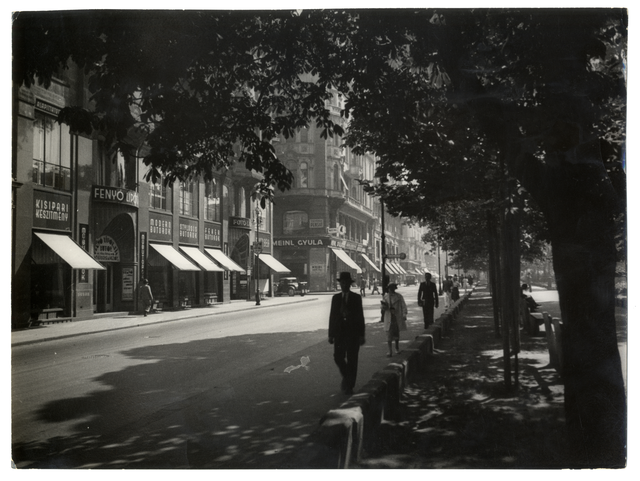
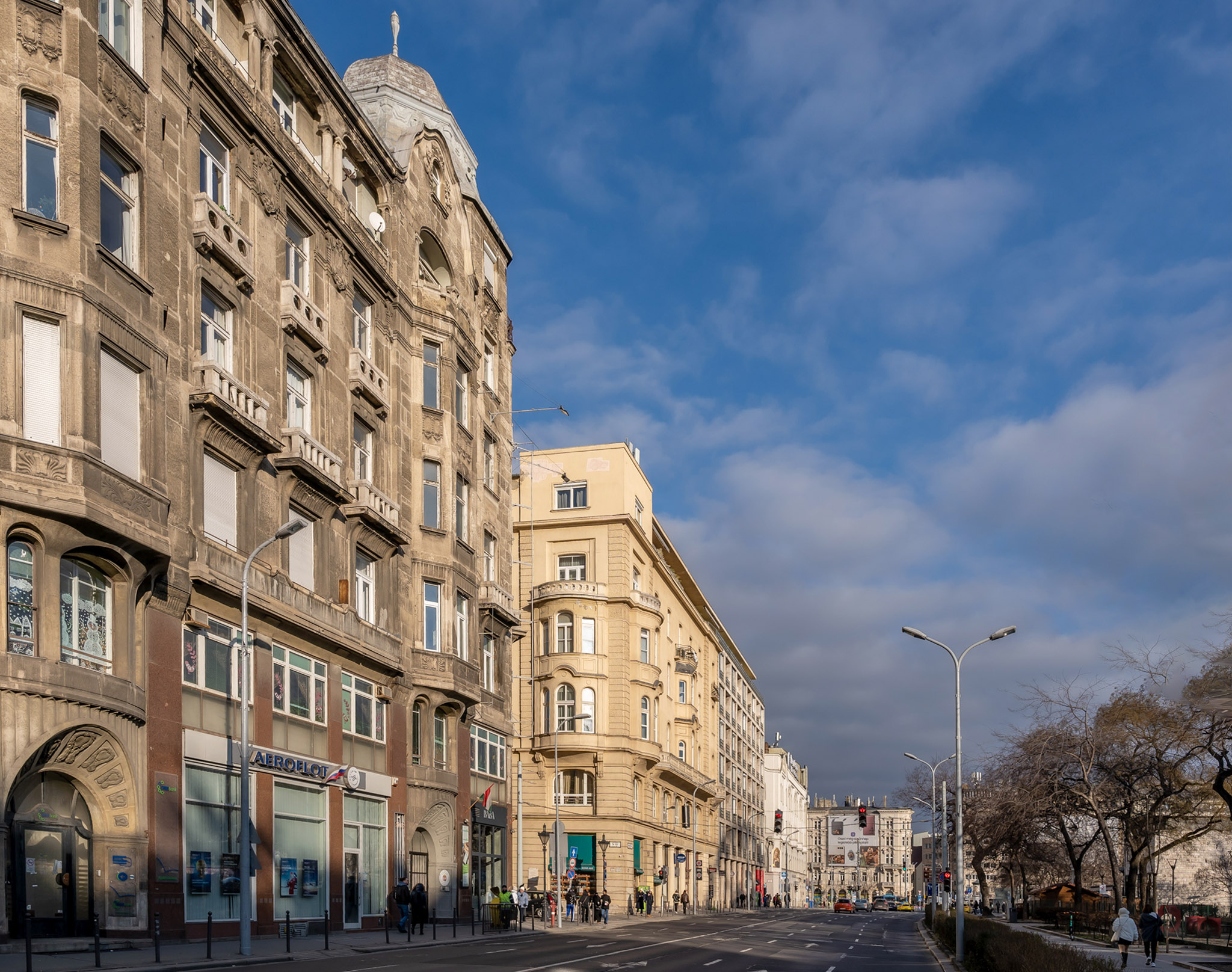
Above: The former Gróf Tisza István Street in 1936, below: Today's József Attila Street next to Erzsébet Square (Photo: HNM, Balázs Both/pestbuda.hu)
The cosy picture above is so idyllic that at first people would think it was taken in the happy times of peace, but it was much later: in 1936. The dress of the lady walking towards us on the pavement of today's József Attila Street next to Erzsébet Square is much looser than it would have been before the turn of the century, as is the shape of the typically uncomfortable concrete benches that can be seen on the right side. The building erected in 1910 on Gróf Tisza István Street, which was designed by Károly Rainer, and on the ground floor of which the furniture wholesaler store of Lipót Fenyő operated, is clearly visible opposite to the left. The characteristic element of the Art Nouveau house is the arched gate, which can also be identified in today's pictures. The house further away, on the corner of today's Sas Street, is still there, although the shop of "Gyula Meinl" no longer operates on its ground floor.
It is always interesting to marvel at the change in the streetscape, but the permanence, that is, if a location has survived the storms, can be just as surprising. We should remember that we are all part of Budapest's present, but to understand it, we also need to know its past.
Cover photo: View of Pest from Gellért Hill with the old Erzsébet Bridge around 1910 (Photo: FSZEK Budapest Collection)

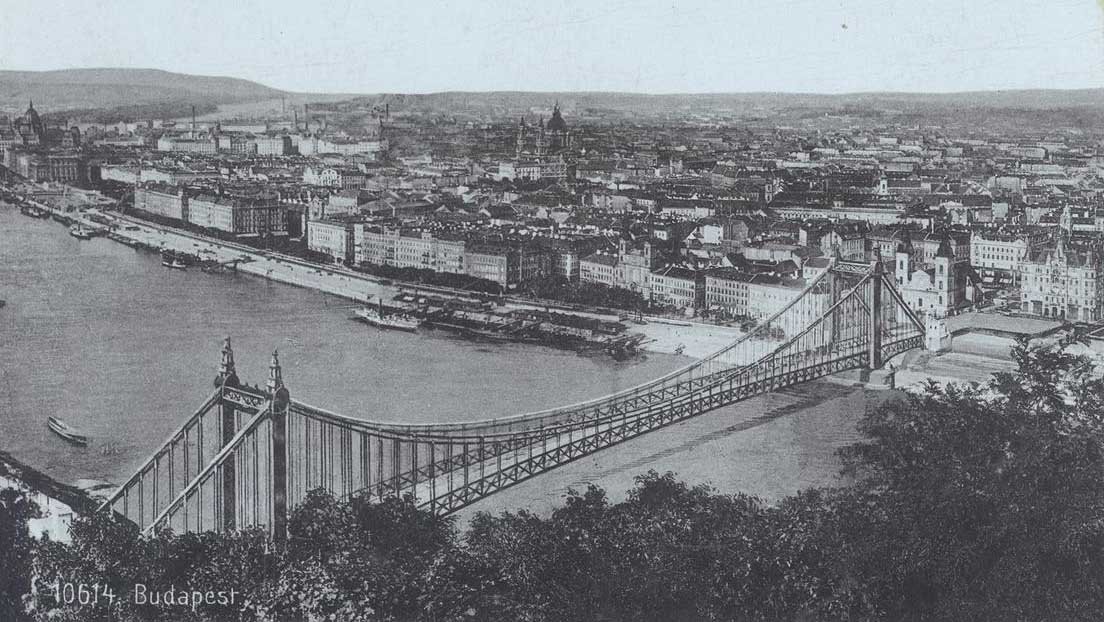

































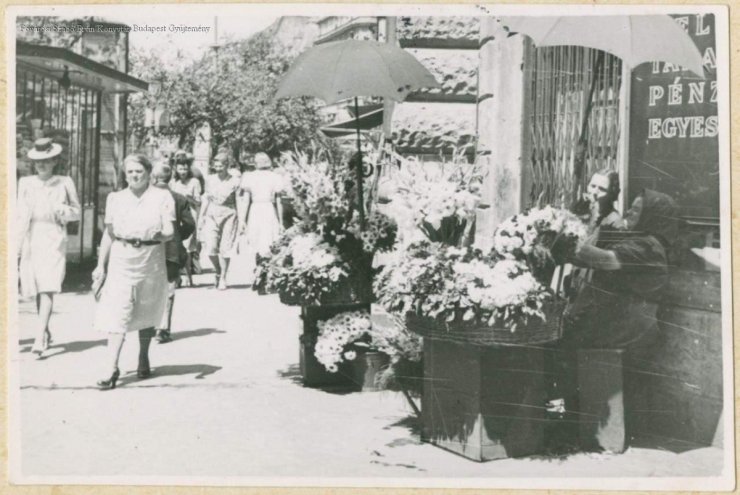
Hozzászólások
Log in or register to comment!
Login Registration